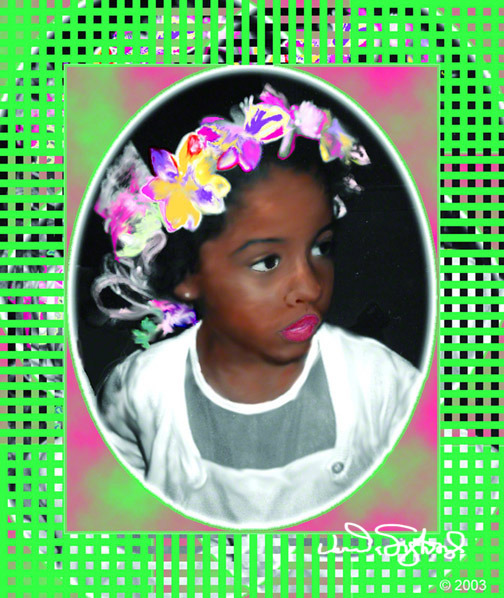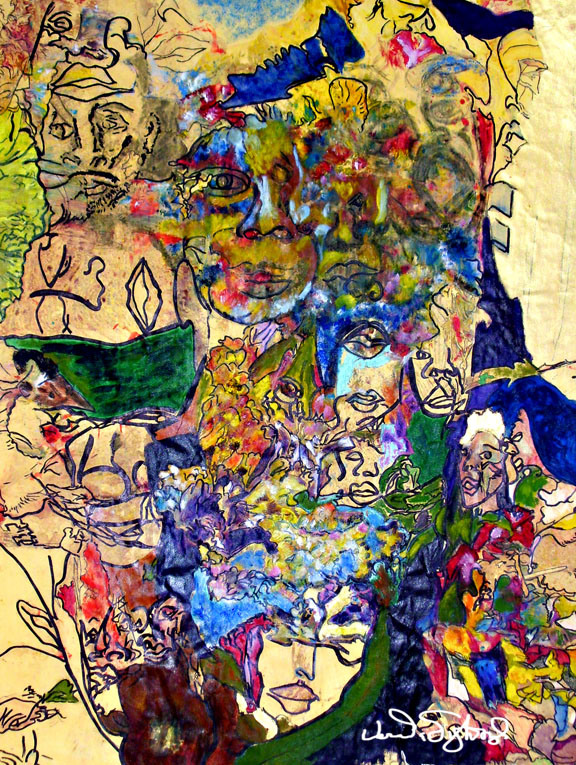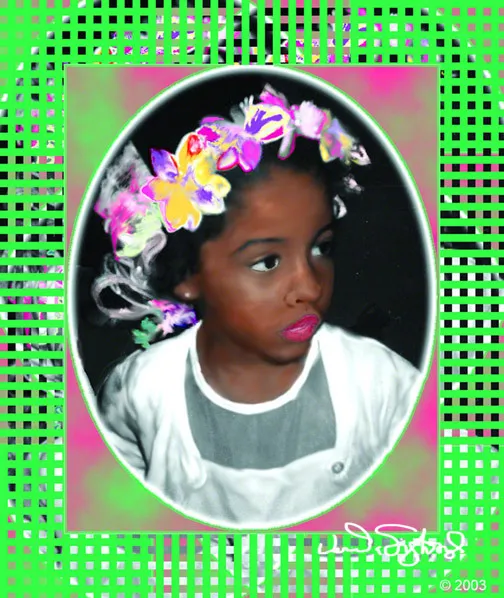
The Afro-Surrealist “An American Girl” is a digital painting courtesy of Verneda Lights, CEO of E-graphX Omnimedia. All rights are reserved.
[Editor’s Note: This piece was originally published on Black Girl Nerds. It has been re-published here with permission.]
A couple of weeks ago, a science fiction writer expressed his frustration at being pushed to the margins of science fiction. He argued that Black science fiction writers were not taken seriously in the speculative fiction community, and when discussed at all, were placed in categories such as New Weird or slipstream when that may not have been what they were doing at all. Why, he asked me, do all these categories matter?
It’s the same question my dissertation advisor more recently posed to me.
My dissertation examines how AfroSurrealism differs from other forms of Black speculative fiction, such as Afrofuturism and the AfroFantastic, but underlying my research is the more serious question–why do these debates matter? Why should we attempt to delineate one type of speculative fiction from another? What are the dangers of not studying texts written by writers of color? And what are the risks associated with mislabeling or miscategorizing them?

The AfroSurrealist work “World Invisible, Garden of Eden” is a mixed media (charcoal, ink, acrylic and oil on acid free paper), and measures 18” x 24.” Courtesy of Verneda Lights. All rights are reserved.
I’d argue that in science, you label and classify in order to study, in order to understand. Our minds have limited ability. We cannot sort through everything, and classifying information makes it easier for us to have a sense of how different ideas interact. It’s important to recognize that these categories aren’t fixed and sometimes interlap. For example, the Gullah web designer-visual artist Verneda Lights sometimes creates art that is traditional, AfroSurreal, or AfroFuturistic. The two pieces included in this post, “World Invisible: Garden of Eden” and “An American Girl,” are works that I would describe as AfroSurreal, rather than as AfroFuturistic or traditional, because they aren’t focused on the future or the past, but instead, seamlessly blend both. Lights, who is also a physician, poet, and entrepreneur, shows how difficult it can be to categorize art; contemporary artists often have diverse interests and create work that explores multiple themes.
Yet today, many scholars are categorizing art in order to understand it. Alondra Nelson, Mark Dery, Ytasha Womack, and Marleen Barr have produced groundbreaking work in the category of Afrofuturism. Franklin Rosemont and Robin D.G. Kelley’s Black, Brown, and Beige along with Terri Francis’s AfroSurrealist film series and D. Scot Miller’s AfroSurrealist Manifesto have given us a foundation for studying AfroSurrealism.
And in 2016, one of the largest conferences for writers and writing teachers, the Association of Writers and Writing Programs (AWP) will feature two speculative fiction panels featuring writers of color, “Octavia Butler and Her Legacy” and “Social Justice in Speculative and Fantastical Fiction for Young Readers.”
Black science fiction studies is growing, and I think that’s a good thing. Writers of color tend to be understudied, but the growing categorizations demonstrate that their work has value and is worthy of analysis.
We need to have these discussions. Anything we take seriously, we study. We need critics to analyze these texts, even if we later realize our hypotheses were wrong.
(all images courtesy of Verneda Lights)
Rochelle is co-editor of All About Skin: Short Fiction by Women of Color(Univ. of Wisconsin Press, 2015), and her work appears in the Crab Creek Review, Callaloo, Poets and Writers, Mosaic, the African American Review, and other journals. A Pushcart Prize nominee and Chesterfield Film Writers’ Project Semi-Finalist, she is currently completing a dissertation on Afro-Surrealism.
—Please make note of The Mary Sue’s general comment policy.—
Do you follow The Mary Sue on Twitter, Facebook, Tumblr, Pinterest, & Google +?








